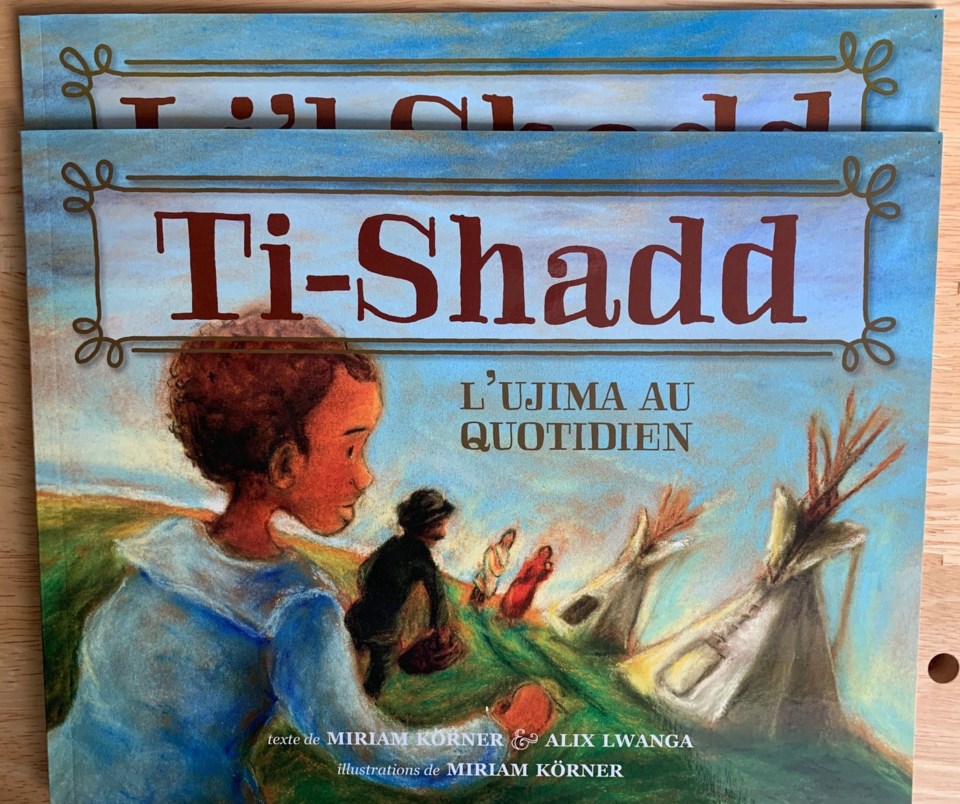MELFORT — A new French language children’s book by two Saskatchewan authors aims to show kids part of the prairie region’s history of partnership between Black and Indigenous communities.
“We're contributing members and we have been here for a very long time … we have cemented a place for ourselves, alongside other communities as well,” co-author Alix Lwanga said of Saskatchewan’s history of Black settlement.
She and illustrator Miriam K√∂rner wrote the book¬ÝLi‚Äôl Shadd A Story of Ujima¬Ýin 2015 through a partnership with the Saskatchewan African Canadian Heritage Museum (SACHM) and the Melfort museum.
In late October SACHM finished publishing the book’s French edition.
The book tells of Dr. Alfred Schmitz Shadd, the first Black doctor to move to the Saskatchewan area in 1896. Coming from Ontario, Shadd first settled in the Kinistino area, about 30 kilometres west of Melfort.
Lwanga and Körner use the narrative device of Shadd’s elder son Garrison, nicknamed Li’l Shadd, to show the doctor’s work in the area, which was then the North-West Territories governed by Treaty 6.
“I wanted the voice to be for someone young, so when kids read it they could see themselves in their shoes at the time,” Lwanga said. She researched and co-wrote the book while completing an internship at Melfort’s museum, organized through the University of Regina’s Faculty of Arts.
In the book, the doctor is called away from town when a settler, Reginald Beatty, asks for medical help for an infant girl on behalf of his Cree neighbour, the girl’s father, Nikanisiw.
Li’l Shadd helps his dad through the night while he treats the baby girl, eventually saving her. It allows the Shadds to learn about the Cree traditions of brotherhood, giving thanks and prayer, while the elder Shadd teaches his son about the Swahili tradition of ujima, shared work and responsibility.
The story is based on events in Beatty’s journal, which tell of Shadd performing surgery on the girl’s “tubercular gland” and of later saving Nikanisiw’s two baby boys.
“That was the first time I had a really in-depth look at someone who had been in the province and had such a prominent profile,” Lwanga said of her research.
Before he died in 1915, Shadd took runs at federal and provincial politics, bought the Prince Albert Advocate newspaper, set up Melfort’s Central Drug Store and served as a town councillor, school board member and Masonic Order member.
As a white woman from Germany, Körner said telling Shadd’s story meant collaboration with SACHM and the Melfort museum was important.
“If you write about a culture that's not your own, appropriation is always a big elephant that's kind of in the room,” she said.
That guidance, Körner said, helped her “bring Dr. Shadd’s story to life.”
She believes its themes of “kindness and sharing brotherhood and unity” are ones all readers can connect with.
Lwanga hopes the book allows Black youth to “know the story growing up and … they have a place here and they shouldn't second-guess themselves.”




